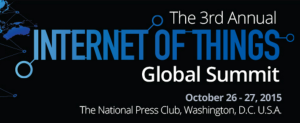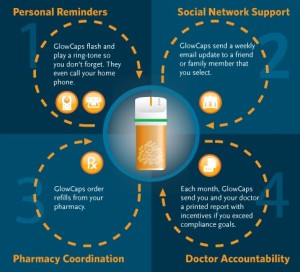As Bob Seger and I prepare to turn 70 (alas, no typo) on Wednesday (as long as he’s still singing “Against the Wind” I know I’m still rockin’) my thoughts turn to my “Smart Aging” paradigm, which combines Quantified Self devices that can change our relationships with doctors into a partnership and give us encouragement to do more fitness activities and smart home devices that make it easier for seniors to run their homes and avoid institutionalization.
That’s why I was delighted to read this week about Apple (obligatory disclaimer: I work part-time at The Apple Store, especially with “those of a certain age,” but am not privy to any of their strategy, and my opinions are solely my own) and IBM teaming with Japan Post (hmm: that’s one postal service that seems to think creatively. Suspect that if one B. Franklin still ran ours, as he did in colonial days, we’d be more creative as well…) to provide iPads to Japan’s seniors as part of Japan Post’s “integrated lifestyle support group” (the agency will actually go public later this year, and the health services will be a key part of its services).
Apple and IBM announced, as part of their “enterprise mobility” partnership that will also increase iPads’ adoption by businesses, that they will provide 5 million iPads with senior-friendly apps to Japanese seniors by 2020. IBM’s role will be to develop app analytics and cloud services and “apps that IBM built specifically for elderly people .. for medication adherence … exercise and diet, and … that provide users with access to community activities and supporting services, including grocery shopping and job matching.”
The overall goal is to use the iPads and apps to connect seniors with healthcare services and their families. I can imagine that FaceTime and the iPads’ accessibility options will play a critical role, and that current apps such as Lumosity that help us geezers stay mentally sharp will also be a model.
According to Mobile Health News, the partnership will offer some pretty robust services from the get-go:
“If seniors or their caregivers choose, they can take advantage of one of Japan Post Groups’ post office services, called Watch Over where, for a fee, the mail carriers will check in on elderly customers and then provide the elderly person’s family with an update.
“In the second half of this year, customers can upgrade the service to include iPad monitoring as well.After Japan Post Group pilots the iPads and software with 1,000 seniors for six months, the company will expand the service in stages.”
Lest we forget, Japan is THE harbinger of what lies ahead for all nations as their populations age. 20% of the population was already over 65 in 2006, 38% will be in 2055. As I’ve said before in speeches, the current status quo in aging is simply unsustainable: we must find ways for seniors to remain healthy and cut the governmental costs of caring for them as they grow as a percentage of the population. As Japan Post CEO Taizo Nishimuro (who looks as if he’s a candidate for the new services — y0u go, guy!) said, the issue is “most acute in Japan — we need real solutions.”
IBM CEO Ginni Rometty said her company will take on a 3-part mission:
“First, they’ll be working on ‘quality of life apps,’ both by building some themselves and by integrating others, all of which will be aimed at accessibility first. The key target will be iOS, since it’s a mobile-first strategy in keeping with our changed computing habits. Second, they’re working on developing additional accessibility features not yet available, and third they’re helping Japan Post with the service layer required to deliver this to the elderly.”
Sweet! — and it reminds me of the other recently announced IBM/Apple announcement, in that case with J & J, to build a robust support structure for Apple’s new open-source ResearchKit and HealthKit platform to democratize medical research. The IoT ain’t nothin’ without collaboration, after all.
Cook, according to TechCrunch, put the initiative in a global context (not unlike his environmental initiatives, where, IMHO, he’s become THE leading corporate change agent regarding global warming):
“Tim Cook called the initiative ‘groundbreaking,’ saying that it is ‘not only important for Japan, but [also] has global implications. Together, the three of us and all the teams that work so diligently behind us will dramatically improve the lives of millions of people.’
“…. The Apple CEO talked about how the company aims to ‘help people that are marginalized in some way, and empower them to do the things everyone else can do.” He cited a UC Irvine study which details how remote monitoring and connection with loved ones via iPad help instill a sense of confidence and independence in seniors. He added that he believes what the companies are doing in Japan is also scalable around the world.”
It will be interesting to see exactly how the partnership addresses the challenge of creating those senior-friendly “quality of life” apps: as someone who’s on the front-lines of explaining even Apple’s intuitive devices to older customers, I can tell you that many seniors begin are really frightened by these technologies, and it will take a combination of great apps and calm, patient hand-holding to put them at ease.
As I enter my 7th decade, I’m pumped!
 In the past, the event was used to launch major IoT regulatory initiatives by the FTC, the only branch of the federal government that seems to really take the IoT seriously, and understand the need to protect personal privacy and security. My other fav component of last year’s summit was Camgian’s introduction of its Egburt, which combines “fog computing,” to analyze IoT data at “the edge,” and low power consumption. Camgian’s Gary Butler will be on the retail panel with me and with Rob van Kranenburg, one of the IoT’s real thought leaders.
In the past, the event was used to launch major IoT regulatory initiatives by the FTC, the only branch of the federal government that seems to really take the IoT seriously, and understand the need to protect personal privacy and security. My other fav component of last year’s summit was Camgian’s introduction of its Egburt, which combines “fog computing,” to analyze IoT data at “the edge,” and low power consumption. Camgian’s Gary Butler will be on the retail panel with me and with Rob van Kranenburg, one of the IoT’s real thought leaders.

